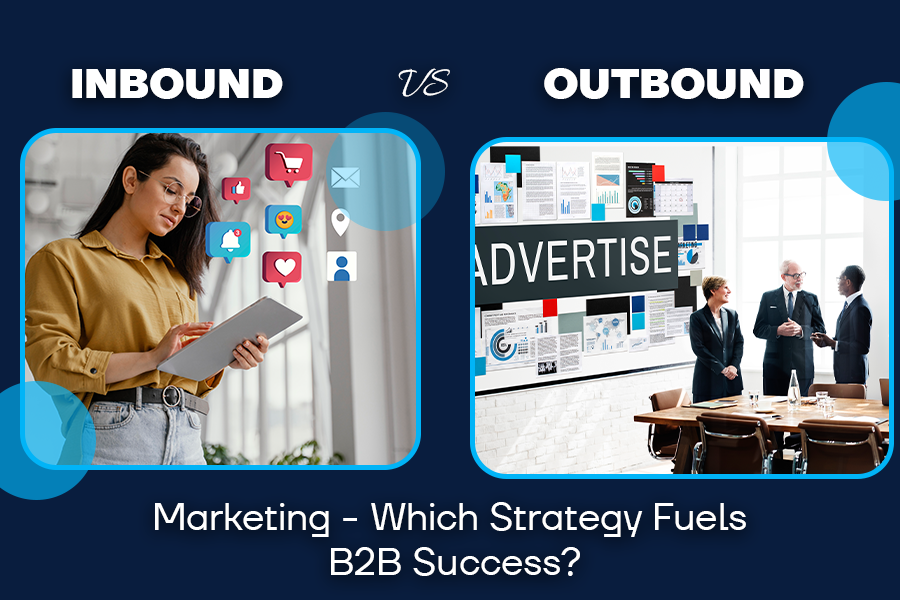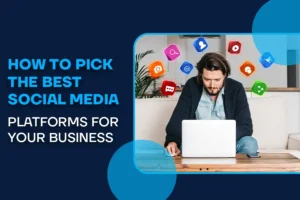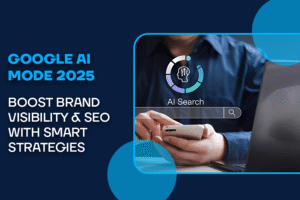Understanding inbound vs. outbound marketing is crucial for B2B growth. Inbound attracts qualified leads through valuable content, while outbound actively reaches out to prospects. Balancing both strategies helps businesses build trust, generate leads, and drive sustainable growth in today’s competitive digital landscape.
Why Inbound vs Outbound Marketing Matters for B2B Growth

Inbound vs Outbound Marketing Which Strategy Fuels B2B Success
Your sales team spends weeks cold-calling prospects, only to face endless voicemails. Meanwhile, your competitor’s website attracts high-quality leads through SEO-optimized blogs and LinkedIn campaigns. This is the inbound vs outbound marketing debate in action, and choosing the right mix can make or break your B2B growth.
At Amigosit Systems, we’ve helped dozens of businesses navigate this divide. Let’s break down what these strategies mean, their pros and cons, and how to leverage them for your goals.
Inbound vs Outbound Marketing What’s the Difference
Inbound Marketing
Meaning: Attract customers through valuable content, SEO, and organic engagement.
Examples:
- Blog posts answering common industry pain points.
- Webinars showcasing your product’s ROI.
- Social media campaigns fostering community (e.g., LinkedIn discussions).
Outbound Marketing
Meaning: Proactively reach audiences via paid ads, cold outreach, or traditional media.
Examples:
- Cold emails to purchase lead lists.
- Trade show booths or TV ads.
- Telemarketing campaigns.
Key Takeaway:
Inbound = “Pull” (audience comes to you).
Outbound = “Push” (you reach out to audiences).
Inbound vs Outbound Marketing Channels
Top Inbound Channels
SEO Blogs: Drive organic traffic with keyword-rich content.
Social Media (LinkedIn, YouTube): Share thought leadership videos or case studies.
Email Nurturing: Send targeted drip campaigns to engaged subscribers.
Top Outbound Channels
Paid Ads (Google, LinkedIn): Target decision-makers with sponsored posts.
Cold Calling/Emailing: Pitch directly to prospects.
Direct Mail: Send brochures to curated B2B lists.
Real-World Example:
A SaaS company used inbound tactics (free tool demos + SEO blogs) to cut customer acquisition costs by 40%. Another used outbound LinkedIn ads to reach C-suite execs in less than 3 weeks.
Inbound vs Outbound Marketing Strategies for B2B
When to Use Inbound
- Building long-term brand authority.
- Targeting tech-savvy buyers (e.g., IT managers).
- Nurturing complex sales cycles (e.g., enterprise software).
When to Use Outbound
- Launching new products quickly.
- Reaching niche industries (e.g., medical device manufacturers).
- Shortening sales cycles with direct pitches.
Case Study:
A cybersecurity firm combined inbound blogs (explaining ransomware ware trends) with outbound LinkedIn ads targeting CFOs. Result? 70% increase in qualified leads within 6 months.
Inbound vs Outbound Marketing: A Quick Comparison
choosing between inbound and outbound marketing? Both have unique strengths and trade-offs. The table below breaks down their pros and cons to help you align tactics with your B2B goals.
Aspect | Inbound Marketing | Outbound Marketing |
Pros | ||
Cost Efficiency | Lower long-term costs (e.g., SEO, blogs). | Immediate reach but higher upfront costs (e.g., ads, cold calls). |
Audience Targeting | Attracts qualified leads actively seeking solutions. | Targets specific demographics (e.g., LinkedIn ads for C-suite). |
Trust & Credibility | Builds authority via thought leadership (e.g., whitepapers, webinars). | Creates instant brand visibility (e.g., trade shows, TV ads). |
Scalability | Content generates leads 24/7 with compounding ROI. | Campaigns can be scaled quickly with budget increases. |
Engagement | Higher engagement (e.g., 3x more leads via SEO). | Lower engagement (e.g., 1-2% cold email response rates). |
Cons | ||
Time Investment | Slow results (3-6+ months for SEO traction). | Faster outcomes but short-lived impact. |
Resource Intensity | Requires ongoing content creation and SEO expertise. | Needs budget for ads, sales teams, or list purchases. |
Perceived Intrusiveness | Non-intrusive (audience opts in). | Often seen as disruptive (e.g., cold calls). |
Measurement | Easy to track long-term metrics (e.g., organic traffic). | Harder to attribute direct ROI (e.g., billboard ads). |
Why B2B Companies Need Both
Inbound builds trust and educates.
Outbound accelerates immediate wins.
Example: Use inbound content to nurture leads, then retarget engaged users with outbound LinkedIn ads.
Final Thought Which Strategy Wins?
The truth? You need both. Inbound lays the groundwork for credibility, while outbound grabs attention in saturated markets.
We blend data-driven inbound tactics (SEO, content hubs) with laser-focused outbound campaigns (hyper-targeted ads, ABM) to fuel B2B growth.
Ready to master the balance?Let Amigosit Systems skills be your winning strategy today.
About Us
With years of experience, our digital marketers smart, data-driven strategies and creative solutions, grounded in a deep understanding of shifting online trends. We focus on making your brand feel authentic and memorable in today’s fast-paced digital world.
Services
Recent Blogs
Follow Us
Let's Talk
(+92) 310 7990605
info@amigositsystems.com
2nd Floor Ismail's Garments Near Town Hall 64200
Frequently Asked Questions (FAQs)
Rising ad blindness (47% of users block ads), strict regulations (e.g., Do Not Call registries), and buyer skepticism make outbound feel intrusive. Inbound generates 3x more leads per dollar by meeting prospects where they already are searching for answers on Google or LinkedIn.
Inbound sales thrive when prospects are already educated—68% of buyers engage vendors who provide value early. Outbound can work for niche targeting (e.g., LinkedIn Sales Navigator), but impersonal tactics risk low response rates (<1% for cold emails).
With 8.5B+ monthly Google searches and 70% of B2B buyers watching videos before purchasing, inbound dominates modern buyer journeys. Brands like Hub Spot and Sales force use blogs and guides to drive 30-40% of their pipelines.




